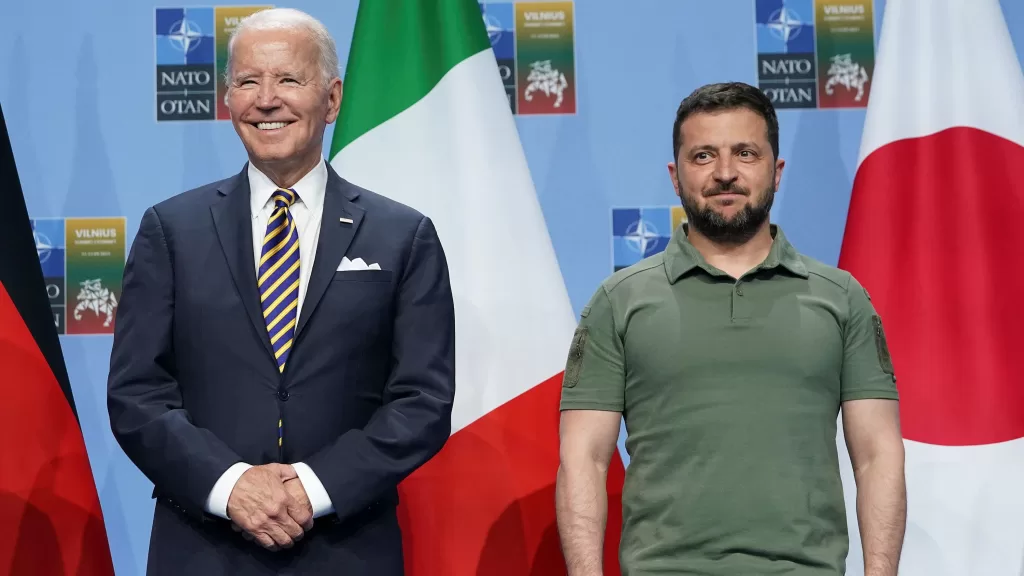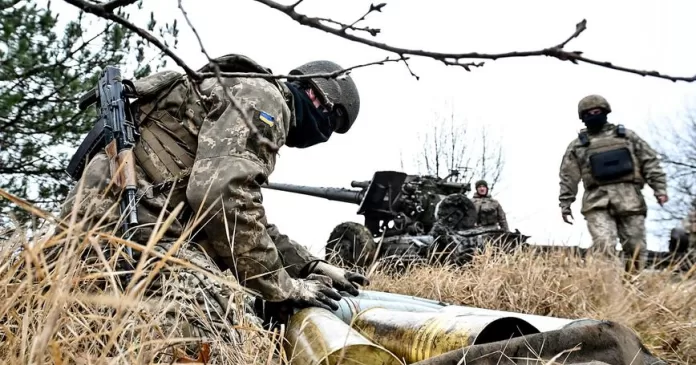Two years after the Russian aggression over Ukraine, the war mosaic is evenly split. There are tales of valour and resilience by the Ukrainians and, likewise, one of strategic excellence as far as the Russians are concerned. The dilemma whatsoever is with Europe and the United States, as they have not been able to stand with Kiev and are not worth more than a debating club for a nation that looked at them for finding a berth in terms of political amalgamation and were deceived even on the military front. The Western psychological hemisphere has proved beyond doubt that they are incapacitated to embrace anyone in the long run, and there is a list of states that have moved on by tasting deceptions such as Turkey, Pakistan, South Africa and Argentine, to count the least, apart from the battle-entrenched Ukraine.
The conflict now in its 25th month has torpedoed everything in the geopolitical domains as well as on the global economic index, especially in terms of supply chain disruption when it comes to food and oil. Ukraine, the food basket for Asia and Africa, and an indispensable valve for energy supply is pushed to the wall, and is confronted with an existential crisis of its own. On the Kremlin front, it has held no qualms in even making it clear that a ‘limited military option’ is also on the war-desk, and what it means in terms of repercussions is best known to the Czar of Russia, Vladimir Putin, as the values-preacher West looks the other way round. Ukraine is now on the brink since it was invaded in February 2022. It has suffered tremendously. The matrix of death and destruction is beyond comprehension, as thousands have perished from both sides and a quarter of Ukraine’s prewar population is displaced.

But somehow Ukraine has stood the ground, and has put up a marvelous fight. There are conflicting inputs on the status quo of battleground. Latest reports say Kiev has taken back 50 percent of what the Russians had occupied in the early months of the battle, and on the other end there are claims that Ukrainian forces had withdrawn from the eastern city of Avdiivka, handing the Kremlin its first big battlefield victory.
A few statistics are worth quoting since the eruption of war in the heartland of Europe. More than 650,000 Russian soldiers are in combat, supplemented by 490,000 contract military personnel and 4,000 student volunteers. Whereas for buoying Ukrainian muscles, a staggering foreign support from 54 countries has poured in around US $203 billion. Kiev is in receipt of over 1,600 missile and artillery weapons, 200-plus SAM systems, 5,220 units of armoured armament and last but not least 23,000 unmanned aerial vehicles.
On the air prowess front, the west has been generous enough to aid Ukraine with 237 airplanes and helicopters, 86 surface-to-air missiles, and 67 radar stations. Yet, the war is far from being won, and Kiev has run short of arms and ammunition. The Red Army is testing Ukrainian resilience and is willing nothing less than a complete march-over of the territory, as they did with Crimea by annexing it in 2014.
This apathy has led to a grand rubbing of shoulders in Munich in February 2024, and the gathering was sarcastically dubbed as the ‘Davos of Defence.’ The optimism that Kiev will emerge victorious is fading away, and has flipped into gloom. Leaders from Europe sent out an SOS that Ukraine needs nothing but weapons. They were apt in summarizing that the rhetoric of solidarity is in need of ‘walk the talk.’ To recall the Prime Minister of Denmark, Mette Frederiksen, “Ukraine can only win this war with weapons. Words are simply not enough.” Likewise, Ukraine’s Foreign Minister Dmytro Kuleba noted, “I see political will, but political will has to translate into action.”
Across the Atlantic, the United States too seems to be running out of patience, and is clueless as to how to deal with a resurgent ‘Bear from Moscow.’ At the same time, there is a conflict in the US Congress as Republicans have blocked a package of military aid to Ukraine, forcing the NATO Secretary-General Jens Stoltenberg to mull a contingency plan for procuring hardware and ammunition. Heather Conley, head of the German Marshall Fund, went on to warn that more battlefield losses are round the corner for Ukraine, as Russia allegedly reconstitutes its armed personnel.
The tongue-in-cheek, nonetheless, came from Donald Trump, as he said “Russia could do what the hell it wants to…”. He also reminded the NATO member states that had they lived up to the promise of doling out two percent of their respective GDPs on defence, the trans-Atlantic military alliance would have been instrumental against Moscow’s war gear. Rather, Putin is now obsessed with investing in a war economy, in an attempt to ensure not only another term in office but also to ignite the fantasy of Russian neo-imperial glory.
To keep the momentum alive and not to silence the guns, US President Joe Biden has proposed a new $24 billion military and economic package in a last-ditch attempt to sustain Kiev’s forces. But in the long run, their allies have reportedly formulated a “Porcupine Strategy”, meant to formulate military support programs for Ukraine that might come to deter the Kremlin. That, nonetheless, seems to be a non-starter.

Moscow sits pretty strong and is exhausting the Ukrainians. President Putin is neither willing to talk to anyone for brokering a thaw, nor is anyone reaching out to him from Europe or Asia. China literally stands behind Putin, and it is a Machiavellian strategy to say the least. For Beijing too it is a strategic buffer-zone fight that Moscow is engaged in by deterring the expansion of NATO and the European Union towards the East. This is why, perhaps, the invitation to President Xi Jinping by Ukraine is in limbo, and China is weighing the pros and cons of coming out with an equation of convenience. On the other hand, Moscow now relies on Beijing’s largesse to keep its wheel of economy moving as it faces sanctions from the West. Their bilateral has surged by around 40%, and both are contemplating new deals as fossil fuel keeps on flowing into China from Russia.
Why this and what’s the way ahead:
This war is undesired and is an extension of realpolitik. Had the Western military alliance, NATO, not romanced its security shield, and at the same time not lured Ukraine into a mirage of democratization under the 27-member European Union deal, things would have been much different. Ukraine’s ambition to flex its muscles came at the cost of history, geography and an unannounced confrontation with Russia. Moreover, the ethno-lingual and religious cadres came in conflict with the post-Lenin doctrine of Russianization, and this is where Putin is out to bleed the Ukrainians.
Thus, a new security paradigm is desired and the best way out is for Russia and Ukraine to sort it out. Putin is not interested in any formal dialogue with the West at the altar of its security and sovereignty. In order to materialize that proposition, Kiev would have to formally renounce any of its plans to look west and strike a deal with Moscow on a broad-based geopolitical understanding. This does not mean any compromise on its sovereignty but a recalculated approach to its security and stability. Continuing the war for an umpteenth period of time will be myopic.




